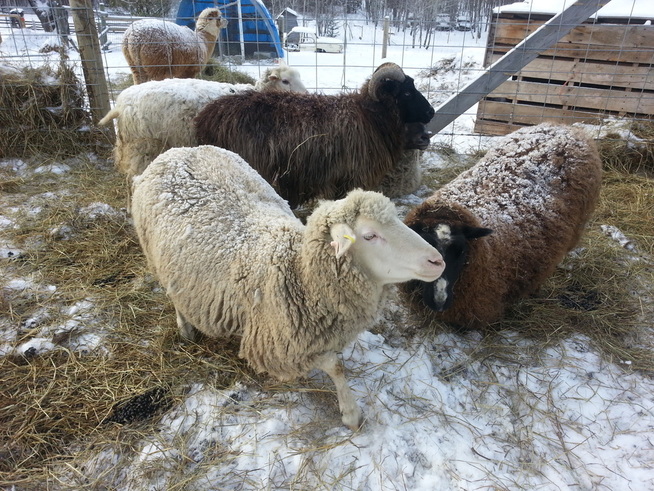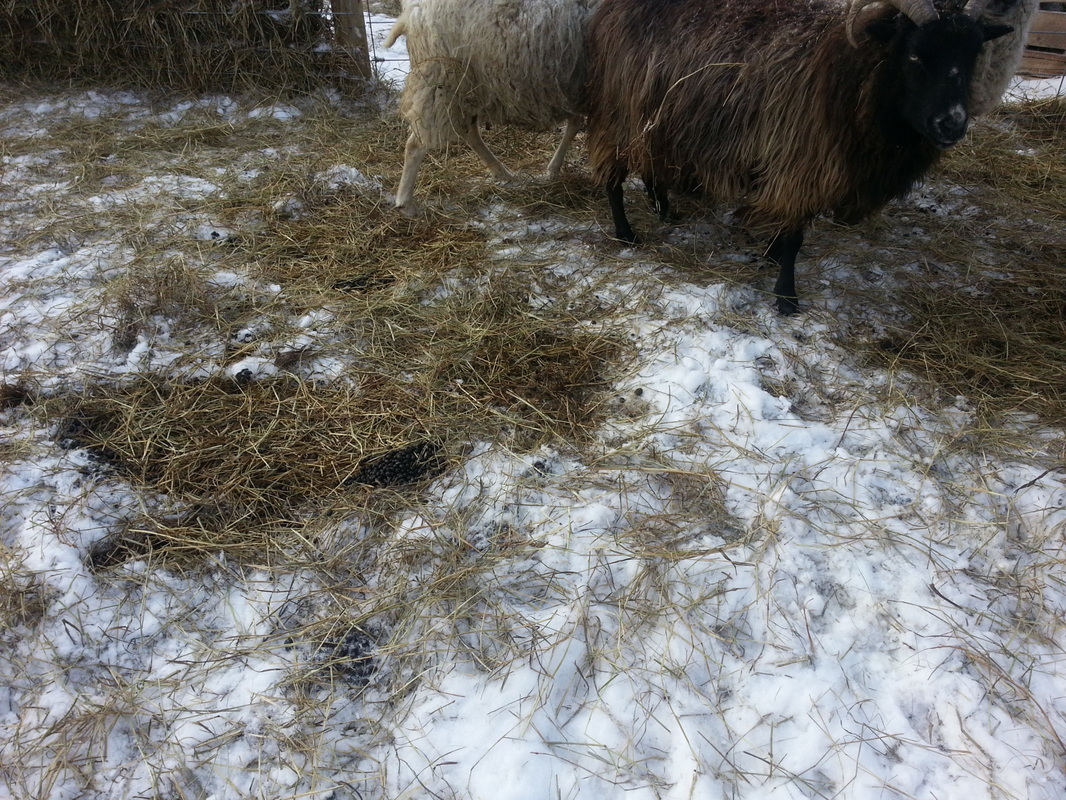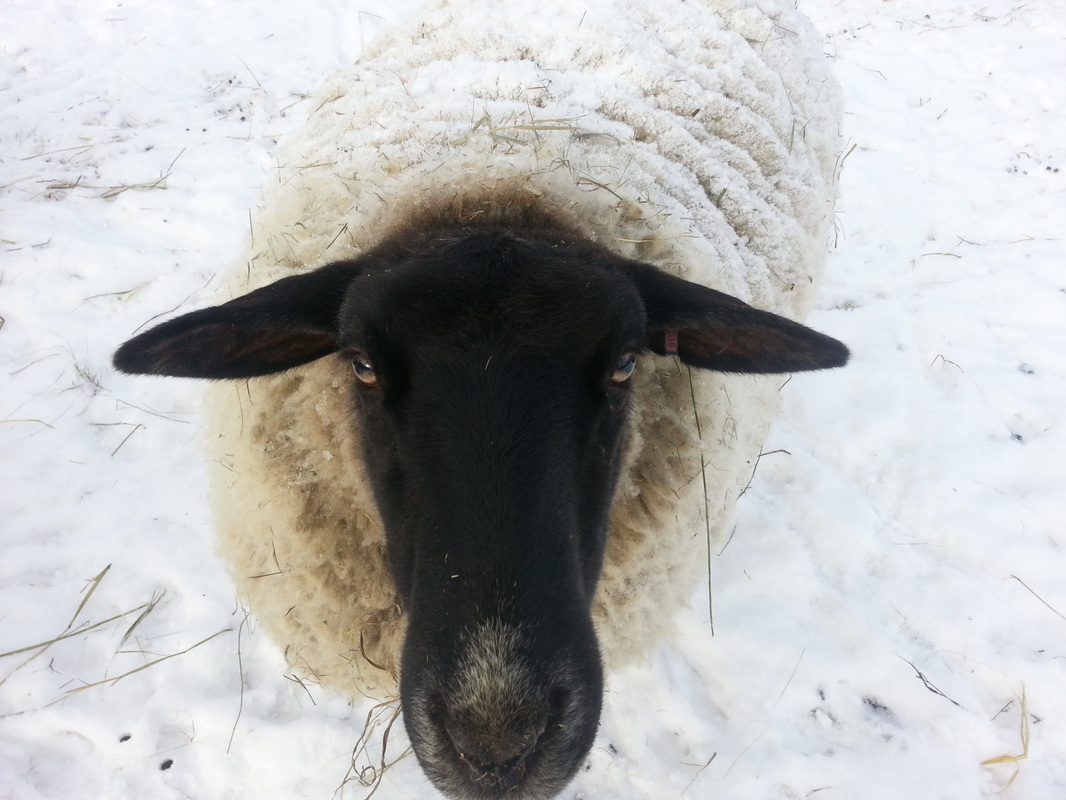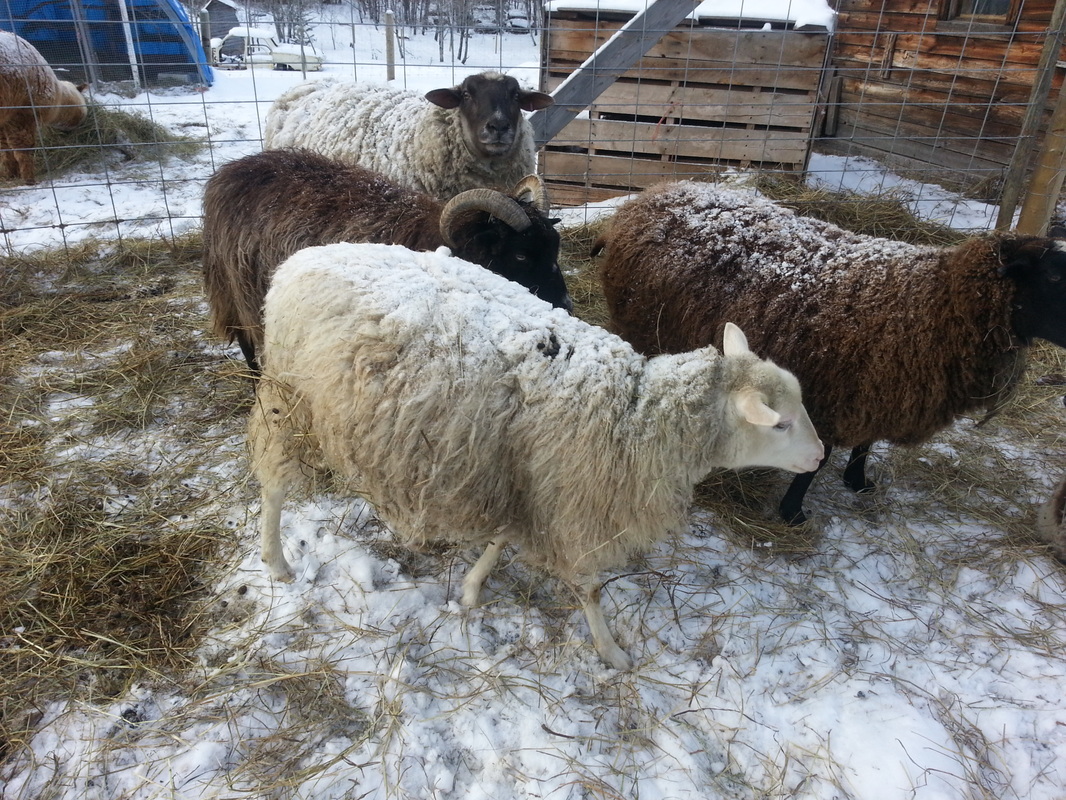 Mary, an E'st a Laine Merino, in the foreground, with a Finnsheep on her right and behind her, Helga, an Icelandic and Lena, a white Karakul. Far in the background is an Alpaca, Zach. These sheep have been outside all night despite the two inches of new snow.
Mary, an E'st a Laine Merino, in the foreground, with a Finnsheep on her right and behind her, Helga, an Icelandic and Lena, a white Karakul. Far in the background is an Alpaca, Zach. These sheep have been outside all night despite the two inches of new snow.
 Mary, an E'st a Laine Merino, in the foreground, with a Finnsheep on her right and behind her, Helga, an Icelandic and Lena, a white Karakul. Far in the background is an Alpaca, Zach. These sheep have been outside all night despite the two inches of new snow. Mary, an E'st a Laine Merino, in the foreground, with a Finnsheep on her right and behind her, Helga, an Icelandic and Lena, a white Karakul. Far in the background is an Alpaca, Zach. These sheep have been outside all night despite the two inches of new snow. Winter is a bitterly cold season in northeastern Alberta. Although the pristine landscapes offer vistas of sparkling white snow atop evergreen trees, with the golden sun highlighting the diamonds on each bow, it is also a time for survival. Sheep have adapted better than most livestock and are experts at making the most of winter. Their warm woolen blanket shields them from the elements and the wool fat, or lanolin, provides water and wind proofing amidst those tender fibers. This insulation keeps the sheep warm in winter, so much so, that the long wooled breeds, such as the Icelandic and Karakuls, do not seek shelter except in the worst blizzards. High winds will also send them looking for refuge, as will heavy downpours of rain. But, for the most part, the sheep snuggle themselves into a depression and sleep with the downy flakes falling on the downy wool that covers them. In the morning, they wake up and shake off the snow, leaving an imprint and the telltale dung passed during the night. The snow further blankets their wool and does not melt, since their body heat is kept well away from the exterior of the covering. Some breeds of sheep, not the more recent man bred ones, but especially the primitives, also eat the snow to acquire their water. When fresh water is offered, they are not interested, since their thirst has been quenched by the consumption of the snow. While the poor shepherd must dress in layers, hopefully some of them constructed from the precious wool from the sheep, to keep warm, the sheep are simply themselves. Nature is amazing and so are the wooly creatures on the Fat Ewe Farm.
0 Comments
Your comment will be posted after it is approved.
Leave a Reply. |
Categories
All
AuthorFluffy writes daily about the experiences on the farm and with the bed and breakfast patrons. Archives
October 2020
|




 RSS Feed
RSS Feed